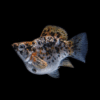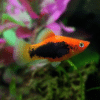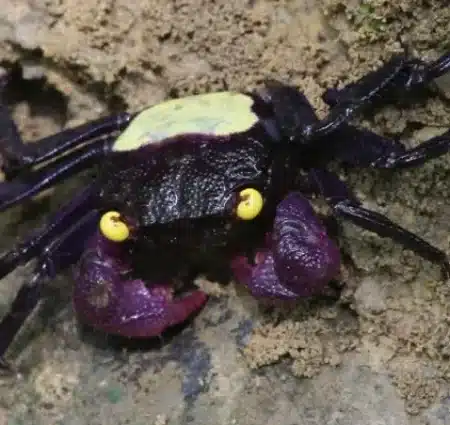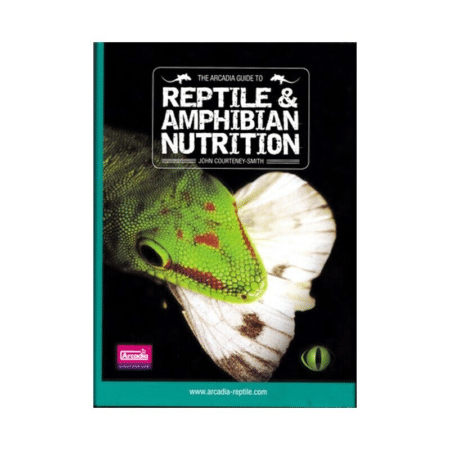BLACK CORY CORYDORAS TROPICAL FISH VENEZUELAN CATFISH STUNNING 2-3CM, Stunning Pet Fish for Beginners, Easy Care Aquarium Friends That Enhance Your Tropical Setup
£6.99 Original price was: £6.99.£5.81Current price is: £5.81.
Welcome these stunning BLACK CORY CORYDORAS, a set of 10 elegant catfish perfect for your aquarium. Known for their striking black coloration and playful nature, these beautiful inhabitants thrive in community tanks, adding joy and vibrancy to your aquatic environment.
963 in stock
Species Introduction
The Black Cory Corydoras, commonly known as the Black Corydoras or Venezuelan Catfish, is a captivating freshwater fish that belongs to the family of catfish. These delightful aquatic companions are native to the slow-moving waters of South America, particularly in the Amazon River basin. Their natural habitat consists of sandy substrates, dense vegetation, and an abundance of organic matter, which provides them with a rich environment to thrive. Typically, they reach a maximum length of about 3-5 cm, making them ideal for smaller community tanks. Their striking black coloration, coupled with their playful behavior, makes them a favorite among aquarists. Understanding their natural habitat and behavior is crucial for recreating an optimal environment that promotes their health and well-being.
Care Requirements Dashboard
Essential Care Guide for Your Black Cory Corydoras Tropical Fish Venezuelan Catfish
| Optimal Living Conditions | |
|---|---|
| Water Temperature | 22-28°C (72-82°F) |
| pH Level | 6.0-7.5 |
| Water Hardness | 2-15 dKH |
| Minimum Tank Size | 120L (30 gal) |
| Salinity | Freshwater |
| Care Level | Beginner to Intermediate |
✓ Care Level: Easy
| Parameter | Requirements |
|---|---|
| Tank Size | Minimum 20 gallons |
| Water Temperature | 22-28°C (72-82°F) |
| pH Level | 6.0-7.5 |
| Hardness | 2-15 dGH |
Natural Behavior & Temperament
The Black Corydoras displays a fascinating array of natural behaviors that make them a joy to observe. They are primarily bottom dwellers, often seen foraging through the substrate for food. Their social nature means they thrive in groups, ideally in schools of at least six individuals. This schooling behavior not only provides them with a sense of security but also encourages their playful antics, such as darting and swimming in unison. Black Corydoras are peaceful fish, making them excellent additions to community tanks. They exhibit a calm demeanor, rarely displaying aggression towards other tank mates. However, they can be shy, especially in the presence of larger or more boisterous fish, so providing plenty of hiding spots and plants is essential for their comfort.
Tank Setup Guide
Creating an ideal environment for your Black Corydoras is crucial for their health and happiness. Start with a tank size of at least 20 gallons, as this allows ample swimming space and helps maintain stable water parameters. The substrate should be soft and sandy, as sharp substrates can injure their delicate barbels. Incorporate plenty of hiding spots using driftwood, caves, and live plants to mimic their natural habitat. Floating plants can also provide shade and reduce light intensity, which can help reduce stress. Ensure that the tank is equipped with a gentle filtration system, as these fish prefer calm waters. Regular maintenance, including water changes and substrate cleaning, will help maintain optimal water quality, essential for the well-being of your aquatic companions.
Water Quality Management
Important Water Parameter Notice
Maintaining the right water quality is vital for the health of your Black Corydoras. Aim for a pH level between 6.0 and 7.5, with a water hardness of 2-15 dGH. The temperature should be kept between 22-28°C (72-82°F). Regular testing of these parameters using reliable test kits will help you monitor the water quality effectively. Additionally, ensure that ammonia and nitrite levels remain at 0 ppm, while nitrates should be kept below 20 ppm. Performing regular water changes of 25-30% every two weeks will help keep the tank clean and the water parameters stable. This diligence will create a thriving environment for your Black Corydoras and other tank inhabitants.
Feeding & Nutrition
Feeding your Black Corydoras a balanced diet is essential for their growth and overall health. They are omnivorous fish, which means they thrive on a varied diet that includes both plant and animal matter. High-quality sinking pellets specifically designed for bottom feeders are an excellent staple food. Supplement their diet with frozen or live foods such as bloodworms, brine shrimp, and daphnia to provide essential nutrients and enhance their coloration. Additionally, blanched vegetables like zucchini and spinach can be offered occasionally to diversify their diet. Feeding should be done once or twice a day, providing only what they can consume within a few minutes to prevent overfeeding and maintain water quality.
Compatibility Guide
The Black Corydoras is known for its peaceful temperament, making it an ideal candidate for community tanks. They generally coexist well with a variety of other freshwater species, including tetras, guppies, and other small to medium-sized fish. However, it is essential to avoid pairing them with aggressive or overly large fish that may intimidate or harm them. A well-planned community tank with compatible tank mates will not only enhance the beauty of your aquarium but also provide a stress-free environment for your Black Corydoras.
Tank Mate Compatibility Guide
Great Tank Mates
- Other peaceful community fish
- Corydoras catfish
- Small tetras
- Peaceful dwarf shrimp
Avoid These Tank Mates
- Aggressive cichlids
- Large predatory fish
- Fin nippers
Compatibility Note: Always research specific species requirements and observe fish behavior when introducing new tank mates. Individual fish personalities can vary!
Health & Wellness
Ensuring the health and wellness of your Black Corydoras involves regular monitoring and preventive care. Common issues that may affect these fish include ich, fin rot, and bacterial infections. Signs of illness can include lethargy, loss of appetite, and abnormal swimming behavior. To prevent such health issues, maintain stable water parameters and perform routine water changes. Quarantine new fish before introducing them to the main tank to avoid introducing diseases. If you notice any signs of illness, it is crucial to act quickly. Consult with a knowledgeable aquarist or veterinarian for appropriate treatment options. Regular observation and prompt action can significantly enhance the longevity and vitality of your aquatic companions.
Breeding Information
Breeding Black Corydoras can be a rewarding experience for aquarists. These fish are egg layers, typically spawning in groups. To encourage breeding, provide a separate breeding tank with soft, slightly acidic water and plenty of hiding spots. The breeding process often begins with the male chasing the female, which leads to the female laying eggs on flat surfaces such as leaves or glass. After spawning, the parents should be removed to prevent them from eating the eggs. The eggs will hatch within 3-5 days, and the fry can be fed infusoria or finely crushed flakes until they are large enough to consume regular fish food. With proper care and attention, you can successfully raise a new generation of Black Corydoras to enjoy in your aquarium.
Acclimation Process
Acclimating your new Black Corydoras to their new environment is a critical step in ensuring their health and comfort. Start by floating the sealed bag containing the fish in the aquarium for about 15-20 minutes to equalize the temperature. After that, gradually introduce the fish to the tank water by adding small amounts of tank water into the bag every 5-10 minutes. This process should take about an hour. Once acclimated, gently release the fish into the tank using a net to avoid introducing any excess bag water, which may contain harmful substances. Proper acclimation will help reduce stress and promote a smooth transition for your new aquatic friends.
Long-term Care
Providing long-term care for your Black Corydoras involves understanding their lifecycle and growth expectations. In optimal conditions, these fish can live for 5-10 years, making them a long-term commitment in your aquarium. Regular monitoring of water quality, consistent feeding schedules, and maintaining a stable environment are essential for their longevity. Additionally, observing their behavior and interactions with tank mates will help you identify any potential issues early on. With proper care, your Black Corydoras will thrive, bringing joy and beauty to your aquarium for years to come.
Natural Habitat Recreation
Recreating the natural habitat of Black Corydoras in your aquarium is essential for their well-being. Start by using a sandy substrate that mimics the riverbeds of their native environment. Incorporate driftwood and rocks to create hiding spots and territories. Adding live plants not only enhances the aesthetic appeal of the tank but also provides cover and helps maintain water quality. Consider using floating plants to diffuse light and create shaded areas. By replicating their natural habitat, you will create a comfortable and enriching environment for your Black Corydoras, allowing them to exhibit their natural behaviors and thrive.
Seasonal Care Adjustments
As seasons change, so too may the needs of your Black Corydoras. During warmer months, ensure that the water temperature remains stable, as fluctuations can stress these fish. Consider using fans or chillers if your tank tends to heat up. In winter, monitor the temperature closely, as cold drafts can lower tank temperatures significantly. Adjust your lighting schedule to mimic natural day lengths, as this can influence their behavior and breeding cycles. Regularly check water parameters, as seasonal changes can affect water chemistry. By being proactive and attentive to seasonal changes, you can ensure a healthy and thriving environment for your Black Corydoras.
Expert Tips
For those looking to deepen their knowledge of Black Corydoras care, here are some expert tips to enhance your aquarium experience. First, consider keeping a larger group of these fish, as they feel more secure and display more natural behaviors in schools. Regularly vary their diet to ensure they receive all necessary nutrients; this can also enhance their coloration. Additionally, maintaining a well-planted tank not only provides hiding spots but also promotes healthy water conditions. Finally, engage with your fish regularly; spending time observing their interactions can lead to a deeper appreciation of their unique personalities and behaviors.
Troubleshooting
If you encounter issues with your Black Corydoras, it is essential to troubleshoot effectively. Common problems include stress due to poor water quality or unsuitable tank mates. If you notice signs of stress, such as hiding or erratic swimming, check your water parameters immediately. If you suspect illness, isolate affected fish and consult a veterinarian or experienced aquarist for guidance. Additionally, ensure that your tank is not overcrowded, as this can lead to increased aggression and stress. By being proactive and observant, you can address issues before they escalate, ensuring a healthy environment for your aquatic companions.
Scientific Background
The Black Corydoras belongs to the family Callichthyidae, which encompasses a variety of freshwater catfish known for their unique adaptations and behaviors. While specific scientific classification details may vary, these fish are generally recognized for their distinctive body shapes and barbels, which aid in foraging. Research into Corydoras behavior and ecology has provided valuable insights into their care and habitat needs. Conservation efforts are also important, as many species face threats from habitat destruction and pollution. Understanding their scientific background can enhance your appreciation for these remarkable fish and inform better care practices.
Advanced Care Techniques
For aquarists looking to elevate their care for Black Corydoras, consider implementing advanced techniques such as establishing a breeding program or creating a biotope aquarium. Breeding requires specific conditions, including optimal water parameters and a dedicated breeding tank. Additionally, creating a biotope that closely resembles their natural habitat can significantly enhance their well-being. This involves careful selection of plants, substrates, and tank mates that reflect their native ecosystem. Engaging in these advanced care techniques not only benefits your fish but also enriches your experience as an aquarist, allowing you to witness the full beauty and behavior of your Black Corydoras.
Water Quality Parameters
Optimal Range
24-27°C
6.5-7.5
0 ppm
Caution Zone
22-24°C or 27-29°C
6.0-6.5 or 7.5-8.0
0.25-0.5 ppm
Danger Zone
<22°C or >29°C
<6.0 or >8.0
>0.5 ppm
Monitoring Tip: Test water parameters weekly and perform regular water changes to maintain optimal conditions for your aquatic friends!
Frequently Asked Questions
Q: What tank size is required for Black Corydoras?
Black Corydoras, also known as Venezuelan Catfish, thrive in a minimum tank size of 60 litres. They are social fish and prefer to be in groups of at least five, which helps reduce stress and encourages natural behaviours. A larger tank not only provides ample swimming space but also contributes to better water quality and stability. Ensure the tank has a secure lid, as these fish are quite active and can jump if startled. Regular maintenance, including water changes, is crucial to maintain a healthy environment for your aquatic companions.
✓ Expert Tip
Consider adding a gentle filter and plenty of hiding spots using plants and decorations to create a comfortable habitat.
Q: What water parameters do Black Corydoras require?
Black Corydoras prefer slightly acidic to neutral water, with a pH range of 6.0 to 7.5. The water temperature should ideally be maintained between 22°C to 26°C. It is essential to monitor ammonia and nitrite levels, ensuring they remain at zero, while nitrate levels should be kept below 20 ppm. Regular water changes of 25% weekly will help maintain optimal water quality. Using a reliable water testing kit will assist in keeping track of these parameters, ensuring your fish friends remain healthy and vibrant.
✓ Expert Tip
Consider using a substrate of fine sand or smooth gravel to protect their delicate barbels.
Q: How often should I feed Black Corydoras?
Black Corydoras should be fed twice daily, providing only what they can consume in a few minutes. Their diet should include high-quality sinking pellets, which cater to their bottom-dwelling nature, as well as occasional treats such as frozen or freeze-dried foods like bloodworms or brine shrimp. This variety ensures they receive a balanced diet rich in nutrients. Be mindful not to overfeed, as uneaten food can deteriorate water quality, leading to health issues for your aquatic companions.
✓ Expert Tip
Mixing different types of food can enhance their nutritional intake and stimulate foraging behaviour.
Q: What are the best tank mates for Black Corydoras?
Black Corydoras are peaceful and social fish, making them ideal companions for various community tank species. Suitable tank mates include small tetras, rasboras, and peaceful guppies. Avoid aggressive or large fish that may intimidate them. It is advisable to maintain a balanced ratio of species to ensure no single type dominates the tank. Additionally, providing plenty of hiding spots and open swimming areas will help reduce stress and promote harmony among your aquatic friends.
✓ Expert Tip
Introduce new fish gradually and monitor for any signs of stress or aggression during acclimatisation.
Q: How do I properly acclimatise Black Corydoras to my aquarium?
Acclimatisation is crucial for the health of your Black Corydoras. Upon arrival, float the sealed bag in your aquarium for about 15-20 minutes to equalise the temperature. Next, gradually introduce small amounts of tank water into the bag every 5 minutes over the course of an hour. This process helps them adapt to the water parameters of your aquarium. After this period, gently net the fish into the tank, avoiding adding the bag water, which may contain harmful substances. This method ensures a smoother transition for your new aquatic companions.
✓ Expert Tip
Consider using a drip acclimatisation method for more sensitive fish or when introducing multiple fish.
Q: What are the signs of healthy Black Corydoras?
Healthy Black Corydoras exhibit vibrant colours, clear eyes, and smooth, intact fins. They should display active behaviour, swimming around the tank and foraging for food. Their appetite is a strong indicator of health; they should eagerly accept food during feeding times. Additionally, pay attention to their breathing pattern; it should be steady and not rapid. If you notice any signs of lethargy, faded colour, or abnormal swimming behaviour, it may indicate stress or illness, requiring immediate attention.
✓ Expert Tip
Regular observation and prompt action can help ensure the well-being of your aquatic companions.
Q: How do I successfully breed Black Corydoras?
Breeding Black Corydoras can be rewarding, requiring a separate breeding tank with similar water parameters. Provide a fine substrate and plenty of hiding spots. To encourage spawning, perform a partial water change with cooler water, mimicking seasonal rains. The female will lay eggs on flat surfaces, and males will fertilise them. After spawning, remove the adults to prevent them from eating the eggs. The eggs typically hatch in 3-5 days, and the fry will need infusoria or finely crushed flakes until they are large enough for regular food. Monitoring water quality is essential during this time.
✓ Expert Tip
Keeping a small group of Corydoras increases the chances of successful breeding.
Q: What temperature should I maintain for Black Corydoras?
The optimal temperature range for Black Corydoras is between 22°C to 26°C. Maintaining this temperature is crucial for their health and overall well-being. A stable environment is essential, as fluctuations can lead to stress and health issues. Use a reliable aquarium heater with a thermometer to monitor the temperature accurately. Regular checks will help ensure that your aquatic companions are comfortable and thriving in their habitat.
✓ Expert Tip
Consider placing the heater near the filter to promote even heat distribution throughout the tank.
Q: How long do Black Corydoras typically live in captivity?
With proper care, Black Corydoras can live up to 5-7 years in captivity. Their lifespan is influenced by factors such as water quality, diet, and tank conditions. Regular maintenance, including water changes and monitoring parameters, is essential for their longevity. Providing a varied diet and a stress-free environment can also contribute to a longer, healthier life for your aquatic companions. Observing their behaviour and health will help you ensure they live a fulfilling life.
✓ Expert Tip
Keeping a consistent routine for feeding and maintenance can enhance their quality of life.
Q: What type of substrate is most suitable for Black Corydoras?
Black Corydoras prefer a soft substrate, such as fine sand or smooth gravel. This choice is vital for protecting their delicate barbels, which they use to forage for food. Avoid sharp or coarse substrates that may injure them. Additionally, a soft substrate allows for natural burrowing behaviour, which is essential for their well-being. Layering the substrate with some leaf litter can also provide a natural environment and enhance their habitat.
✓ Expert Tip
Regularly vacuum the substrate during water changes to keep it clean and reduce waste accumulation.
Q: What behavioural patterns should I expect from Black Corydoras?
Black Corydoras are known for their playful and social behaviour. They often swim in groups, displaying a range of interactions including foraging and exploring their environment. You may observe them darting around the tank or resting on the substrate. They are bottom dwellers, so you will find them scavenging for food amongst the substrate. Their inquisitive nature makes them fun to watch, and they will often engage with their tank mates, contributing to a lively aquarium atmosphere.
✓ Expert Tip
Providing plenty of hiding spots and open swimming areas enhances their natural behaviours.
Q: How can I prevent common diseases in Black Corydoras?
Preventing disease in Black Corydoras revolves around maintaining optimal water quality and providing a balanced diet. Regular water changes and monitoring parameters like ammonia, nitrite, and nitrate levels are essential. Quarantine new fish before introducing them to the main tank to avoid spreading diseases. Additionally, ensure that the tank is not overcrowded, as stress can lead to health issues. Keeping a close eye on their behaviour and appearance allows for early detection of any potential problems.
✓ Expert Tip
Consider adding aquarium salt in moderation to help boost their immune system, but consult with an expert if unsure.
Q: What lighting conditions do Black Corydoras prefer?
Black Corydoras prefer subdued lighting that mimics their natural habitat. Bright lights can cause stress, so using a combination of floating plants and decorations can help diffuse the light. If you are using an aquarium light, consider a timer to provide a consistent day/night cycle of about 10-12 hours of light daily. This routine will not only benefit the fish but also the plants, if present, creating a balanced ecosystem in your aquarium.
✓ Expert Tip
Adjusting the lighting can also help highlight the beautiful colours of your Black Corydoras.
Q: How do I recognise stress in Black Corydoras?
Recognising stress in Black Corydoras is vital for their well-being. Signs of stress may include hiding excessively, erratic swimming, or rapid gill movements. Additionally, a loss of appetite or faded colours can indicate distress. If you observe these behaviours, check the water parameters immediately, as poor water quality is often a primary cause. Providing plenty of hiding spots and maintaining a stable environment can help minimise stress in your aquatic companions.
✓ Expert Tip
Regular monitoring and maintaining a calm environment will help keep your Black Corydoras stress-free.
Q: What natural habitat conditions should I replicate for Black Corydoras?
Black Corydoras naturally inhabit slow-moving rivers and streams with soft, sandy substrates and plenty of hiding spots. To replicate their habitat, provide a well-planted tank with driftwood, rocks, and leafy decorations. Maintain slightly acidic to neutral water conditions and ensure a gentle water flow. Mimicking these conditions will not only make them feel at home but also promote their natural behaviours, contributing to their overall health and happiness.
✓ Expert Tip
Adding leaf litter can enhance the aesthetic and provide a natural food source for your fish.












Emily Carter (verified owner) –
I recently added these stunning Black Corydoras to my tank, and I couldn’t be happier! After a week of observing their behavior, I can honestly say these little catfish have brought so much joy and activity to my aquarium. Each one is about 2-3 cm and has a captivating black-and-white pattern that really stands out against the substrate.
What impressed me the most is how social they are! They dart around the tank, often sticking together, which is a joy to watch. They’ve quickly become my favorite community fish, especially since they’re peaceful and get along well with my other tropical fish.
Compared to other catfish I’ve kept, these Corys are much more active and engaging, making them a fantastic choice for any aquarium enthusiast. Just a minor note: they do appreciate a sandy substrate to sift through, which can be a little tricky if you’re used to gravel.
Overall, I highly recommend these Black Corydoras for anyone looking to enhance their aquarium. They’re perfect for beginners and experienced fish keepers alike. Plus, they arrived in excellent condition and adapted to my tank within hours. I will definitely be purchasing more in the future!